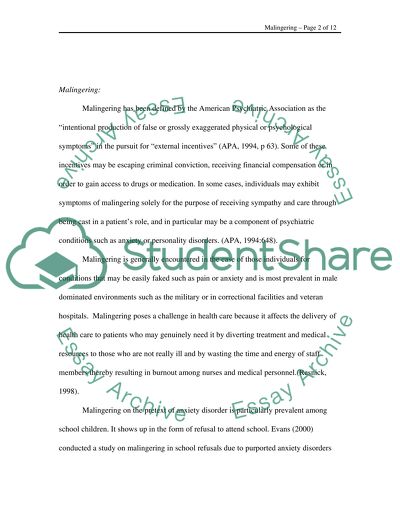Cite this document
(“Critically evaluate the difficulties of assessing malingering in Essay”, n.d.)
Critically evaluate the difficulties of assessing malingering in Essay. Retrieved from https://studentshare.org/miscellaneous/1541712-critically-evaluate-the-difficulties-of-assessing-malingering-in-anxiety-disorders
Critically evaluate the difficulties of assessing malingering in Essay. Retrieved from https://studentshare.org/miscellaneous/1541712-critically-evaluate-the-difficulties-of-assessing-malingering-in-anxiety-disorders
(Critically Evaluate the Difficulties of Assessing Malingering in Essay)
Critically Evaluate the Difficulties of Assessing Malingering in Essay. https://studentshare.org/miscellaneous/1541712-critically-evaluate-the-difficulties-of-assessing-malingering-in-anxiety-disorders.
Critically Evaluate the Difficulties of Assessing Malingering in Essay. https://studentshare.org/miscellaneous/1541712-critically-evaluate-the-difficulties-of-assessing-malingering-in-anxiety-disorders.
“Critically Evaluate the Difficulties of Assessing Malingering in Essay”, n.d. https://studentshare.org/miscellaneous/1541712-critically-evaluate-the-difficulties-of-assessing-malingering-in-anxiety-disorders.


